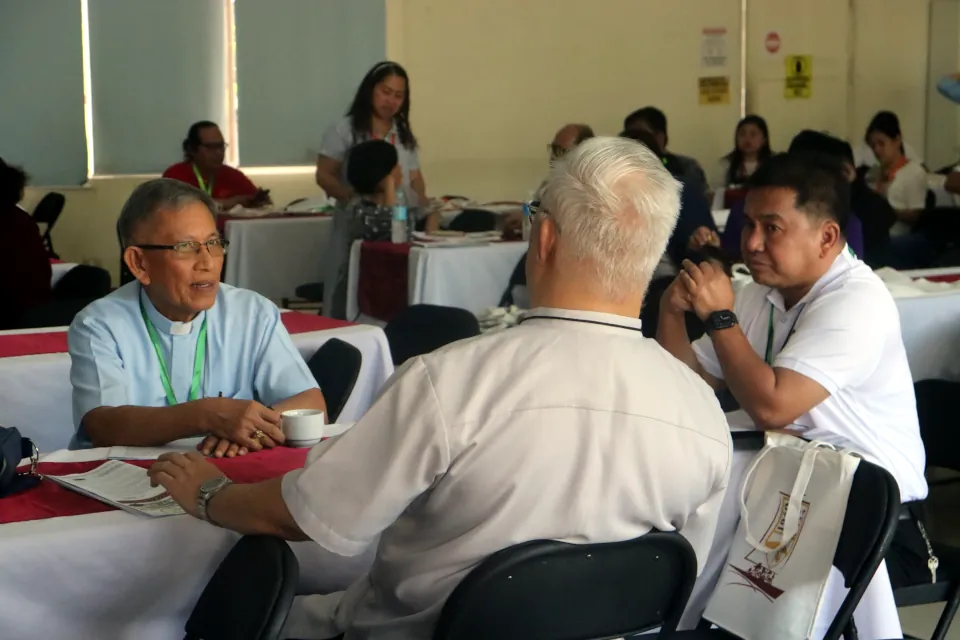
Synodality: Having a Seat on the Table (Part 1 of 2)
Way back in elementary school, I vividly remember my teachers discussing the lessons they had either written on the board or presented on the projector screen in front, standing prim and proper on the long wooden platform for the entire class to see. I can also recall attending seminars and symposiums conducted at the school gymnasium where there was a speaker or speakers on the stage and the student populace was expected to attentively listen to him or her ramble on about their topic. It has always been that way. Someone talks while we remain still and listen. Nothing’s wrong here, however, these are already things of the past. Times have changed. Teacher-centered learning is out, student-centered learning is in. Learners now influence learning content, activities, materials, and pace, sometimes leading discussions on learning materials rather than teachers. In the recent seminars I have attended, I enjoyed the interactive sessions between the audience and the speaker as part of the learning process. Gatherings felt more welcoming, with everyone being involved, and this holds true for the Church today.
The Synod on Synodality, a three-year process of listening and dialogue amongst dioceses and churches across the globe, began in Rome in October 2021 and is to conclude in 2024. During this time, Pope Francis encourages the whole Church to journey together and reflect on the journey made. This journey, which follows the Church’s “renewal” as proposed by the Second Vatican Council, is both a gift and a task. The Church will learn from its experience which procedures will help her live in communion, achieve participation, and open herself to mission.
On March 7, the DADITAMA recollection and meeting was an elaboration of the synthesis report of the Synod session 1 by Dr. Estela Padilla, one of the Bukal ng Tipan pillars, Executive Secretary of the Office of Theological Concerns at the Federation of Asian Bishops conferences, consultant for the CBCP Commission and Basic Ecological Communities, and one of the 70 non-bishops appointed to the 16th Ordinary General Assembly of the Synod of Bishops. Her credentials only show her credibility and dedication to serving the people of God.
At the beginning of her report, Dr. Padilla says synodality is walking together because it is experiential and that experience is the best teacher. In the Vatican sessions in October, they have brought home the experience of togetherness, of trying to understand one another amid our diversity, trying to pray together and decide. Back in the day, a Synod was just an event among representative bishops of different Catholic countries and selected guests, but now, every one of us is part of it. For the last four years, we have been involved in this process of reflection and renewal. The Vademecum, a set of questions, was consulted at the diocese, then national, and then at the Vatican level, with a summary of 121 nations and a digital Synod that reached out to 20 million online participants. The summary was brought back to the national level and then to the continental level. All continental reports served as the foundation for the working paper of the Vatican Synod sessions. This laborious yet beautiful process of listening and discourse broadens our view of the world and perspectives. Cardinal Mario Grech, Secretary General of the Synod of Bishops stated at the Philippine Conference of New Evangelization (PCNE) that listening generates the spirit of God. When we pause to listen, God comes out and speaks. And listening may generate or help us focus on what God is trying to convey.
The synthesis report is titled A Synodal Church in Mission. It has 41 pages and 20 chapters. All 20 chapters are divided into three sections: convergence, which is what the delegates agreed on during the diocesan consultations namely, Salok and Salia, despite having different backgrounds, beliefs, and upbringings; divergence, which is what they didn’t agree on or matters of consideration; and proposals asking the diocese what they can do about the issues at hand. The three parts are as follows:
- The Face of the Synodal Church, wherein synodality is a spiritual experience leading to unity.
- All Disciples, All Missionaries, wherein synodality is a joint journey of people of God with different charisms serving the Kingdom. And;
- Weaving Bonds, Building Communities, wherein synodality is a set of processes and networks between churches and the world.
(Frances Kim Cachila)


No Comments